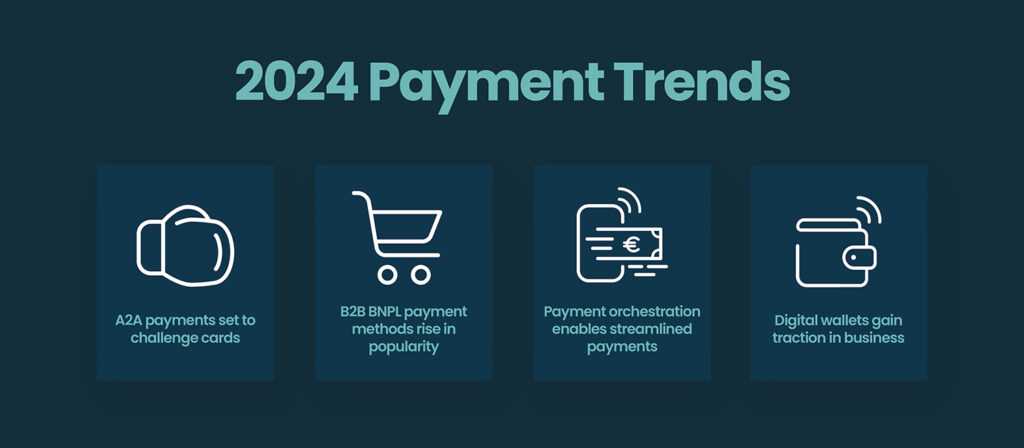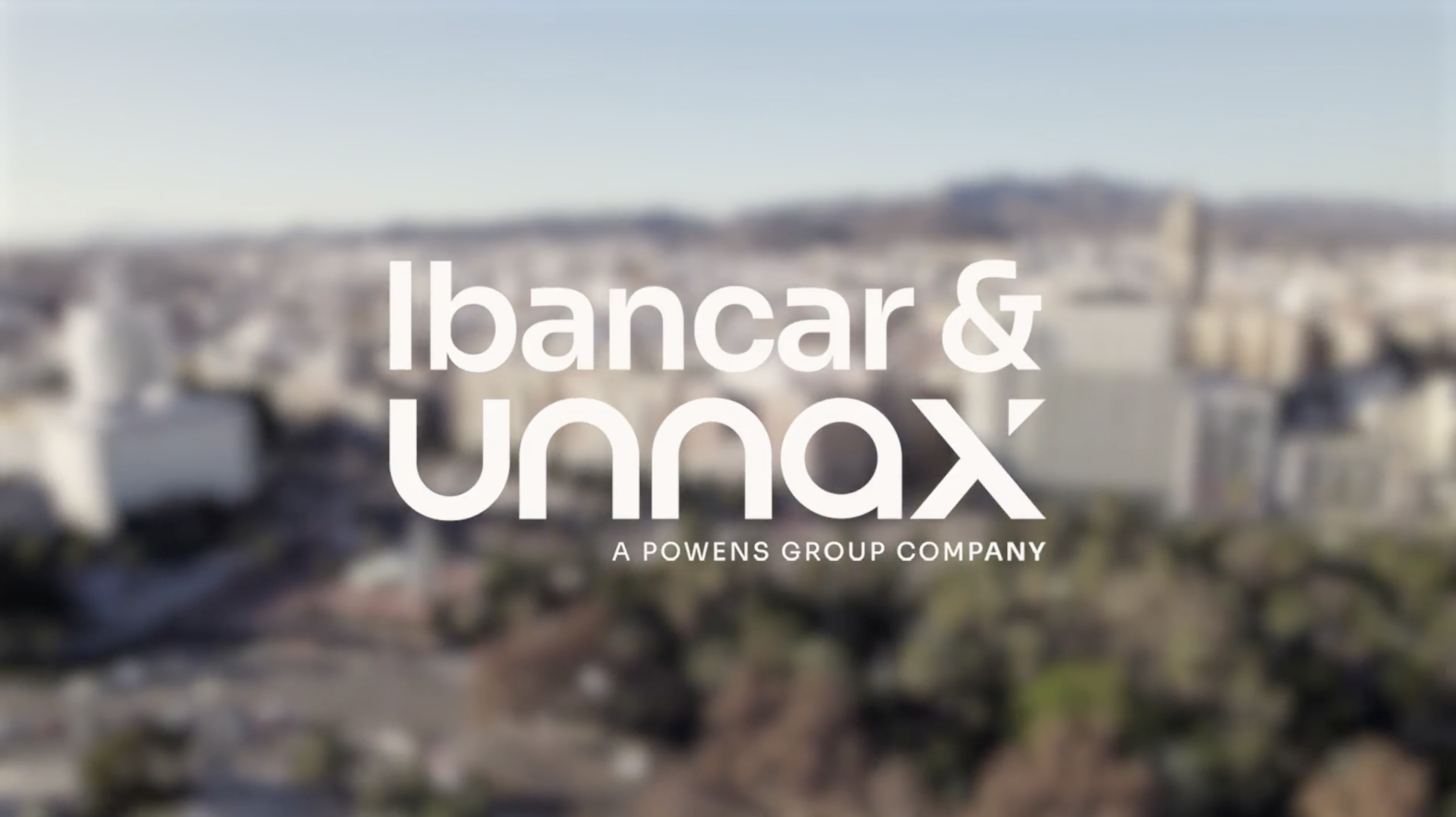The year 2024 is set to be one of the most transformative yet for the global payments industry.
By the time 2025 rolls around, PwC research reports that payment professionals expect to see a 42% increase in global cashless payment volumes. Additionally, 86% of payment professionals agree that collaborations between traditional payment providers and Fintechs will be a main source of innovation.
Below, we explore the four key digital payment trends to know about in 2024 and how embedded finance providers like Unnax can help you keep up with the new year’s changes.

1. A2A payments set to challenge cards
Account-to-Account (A2A) payments are digital money transfers between two bank accounts. Compared to traditional card payments, A2A payments connect bank accounts directly, eliminating the need for credit or debit card providers to act as intermediaries in the payment process. In e-commerce, this also means that A2A payments are completed without leaving the merchant’s page.
According to the Global Payments Report 2023, A2A payments accounted for around $525B (or roughly €487.5B) in total e-commerce transaction value alone.
A2A payments signal a shift away not only from traditional card payments but also from card-linked wallets, most notably in European and Latin American markets. In Europe, A2A payments account for 18% of all e-commerce payments, with Nordic countries leading the charge in A2A payment adoption.
Merchants are particularly drawn to A2A payments due to lower overall costs, faster settlement times, and enhanced security via user verification on mobile banking apps.
Unlike established digital wallets, A2A payments involve direct bank transfers. These payments give non-American consumers and businesses new opportunities to leverage locally operated payment rails rather than American-owned card networks.
The anticipated growth of Variable Recurring Payments (VRPs) adds to A2A’s appeal. As UK regulators explore VRPs further in 2024, we are likely to see a significant shift in the European e-commerce market, making A2A payments a key theme for the year.
2. B2B BNPL payment methods rise in popularity
European adoption of BNPL payments has grown significantly. By the end of 2023, BNPL payments are set to grow by 18.2% in European markets, reaching a value of over $190B.
As the direct-to-consumer BNPL model reaches saturation, B2B BNPL emerges as a meaningful solution for SMEs to address financial gaps. SMEs have faced numerous economic challenges over the last few years, leading to an increased need for modern financial tools and flexible credit options.
Although B2B BNPL payments present new complexities to address, the BNPL model can help SMEs establish tailored solutions for improving cash flow management.
We are also likely to see a rise in new trends that build upon the BNPL model, such as SNPL (Save Now, Pay Later) solutions that aim to limit overindebtedness for SMEs.
3. Payment orchestration enables streamlined payments
Payment orchestration has been on the rise for some time now, evolving the traditional approach to managing a payment system to be more efficient and cost-effective.
Traditionally used as middleware to manage multiple payment services, payment orchestration enables your business to consolidate all of your many payment service providers, payment tools, and other key resources — all while streamlining and improving payment processing.
Unlike legacy providers, payment orchestration efficiently moves money through the payment process, reducing operational and technical debt.
In turn, your business is better prepared to maintain flexibility, optimize costs, improve authorization rates, and gain access to various geographic locations (such as the SEPA zone in Europe).
4. Digital wallets gain traction in business
The global market for contactless payment terminals is projected to reach $43.4B by 2026.
Across almost all sectors, digital wallets prove transformative, especially when it comes to addressing compliance and fund withdrawal challenges. Digital wallets are also gaining traction in businesses for in-house banking, facilitating revenue reconciliation, debt management, and employee account assignments.
According to the ECB’s 2023 Study on Digital Wallet Features, budget management and P2P payments were the two most highly valued digital wallet features in the Euro region. Additionally, offline payments and QR code payments were the most appreciated yet not widely available features of digital wallets, signifying the key areas for improvement and expansion in 2024 and beyond.
Keep up with digital payment trends with Unnax
Unnax stays on the cutting edge of all the latest Embedded Finance and payment trends. As we enter 2024, the Unnax team strives to provide your business with the expert support needed to keep up with the latest innovations in payment technology.
Get in touch with Unnax today to get started.










